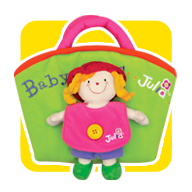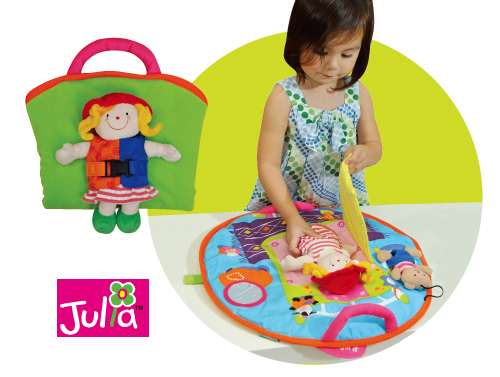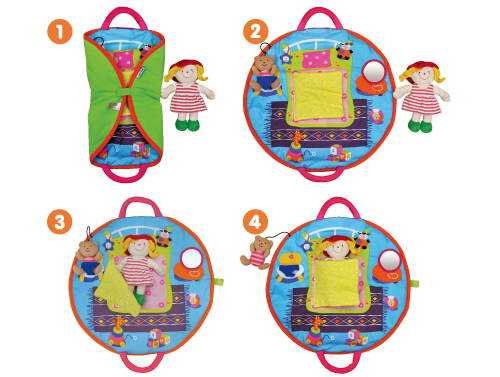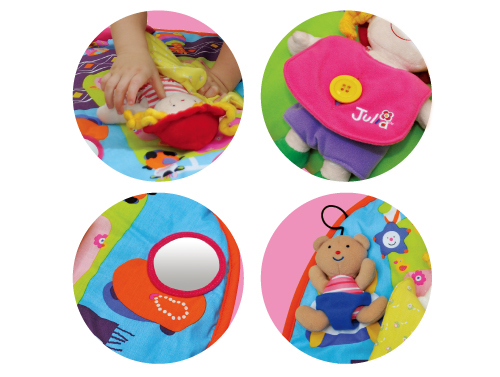Baby, now you can bring Julia with you everywhere, day and night. Dress her, put her to bed, and take good care of her teddy bear. An excellent role-play toy with multiple learning functions: dress up skills, touch and feel, caring, and role modeling - all in this "Baby loves Julia" handbag.
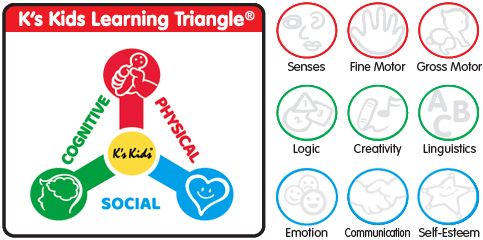








 Senses
Senses
The fundamental senses of seeing, tasting, hearing, smelling & feeling encourage a child's curiosity.
 Fine Motor Skills
Fine Motor Skills
Fine motor skills are those smaller actions between the thumb and fingers or using the toes to wriggle and feel the objects.
 Gross Motor Skills
Gross Motor Skills
Gross motor skills are larger movements involving the arm, leg, or feet muscles or the entire body.
 Logic
Logic
Logical training enables babies to make connections between pieces of information.
 Creativity
Creativity
Colors, shapes, learning how to draw, getting familiar with music and rhythm, all goes to aid the growth of a child's creativity.
 Linguistics
Linguistics
Linguistic Intelligence is the ability to use sound and language for expression and comprehension of others while a child is developing.
 Emotion
Emotion
A healthy child should be able to control and express his emotion, and interact effectively with others with mutual trust.
 Communication Skills
Communication Skills
Good communication skills lead a child to perform cooperative tasks and become productive team members.
 Self-Esteem
Self-Esteem
Self-Esteem is an overall sense of achievement a child feels from the important people around him. Task basis activities could help children to build up a stronger self-esteem with a better judgment about their own worth.
*These are recommendations made under normal circumstances. Parents can determine which activities are most suitable depending on the progress of individual children.
Objective: Hugging - building a sense of security
Method: Julia is made from high quality materials. It is soft and comfortable, great for hugging. Hugging also teaches children to care for others.








Objective: Gross and fine motor skills training
Method: Here are some activities to train children’s gross and fine motor skills: Put Julia in her skirt and bib (unbuttoned). Then allow your child to free Julia. Place the teddy bear in the baby chair. Encourage your child to take him out. Tuck Julia under the covers. Encourage your child to get her out of bed.
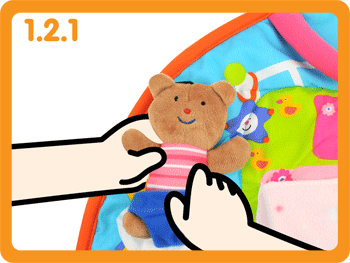











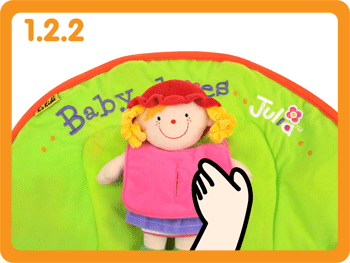











Objective: Developing self awareness - observing herself in the mirror
Method: Allow your child to observe and recognize her own image in the mirror. This helps develop her self-esteem.








Objective: Cognitive training - learning facial features and body parts
Method: Use Julia to teach children facial features and body parts such as the eyes, nose, mouth, head, feet and hands etc.












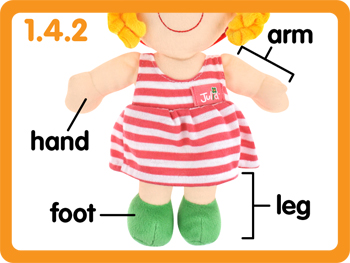











Objective: Cognitive training – pointing to facial features and body parts
Method: Name a facial feature or body part of Julia and encourage your child to point to it.
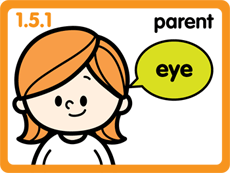











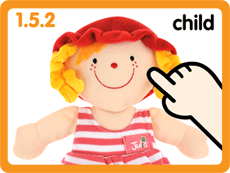











Objective: Cognitive training – learning actions
Method: Using the Julia doll, teach children actions like sitting down, walking, jumping, covering her face and clapping.












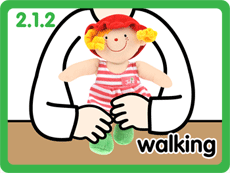











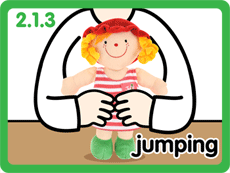











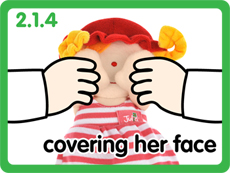























Objective: Cognitive training - learning colors
Method: Use the different colors of the toy to teach children to recognize colors.
























Objective: Cognitive training – pointing to colors
Method: Name a color and encourage your child to point to it.
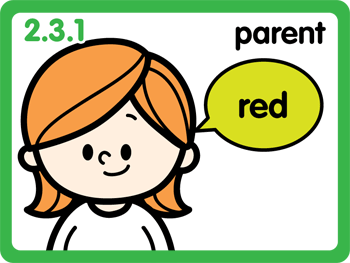











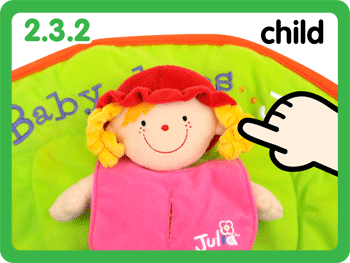











Objective: Advanced fine motor skills training – daytime activities
Method: Allow your child to train her fine motor skills by putting on Julia’s skirt and bib, and by putting the teddy bear in his baby chair etc.
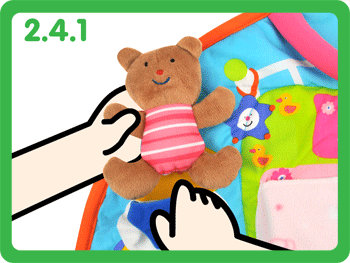











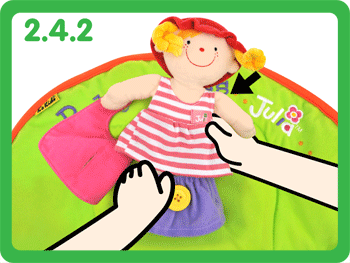











Objective: Advanced fine motor skills training – nighttime activities
Method: Allow your child to train her fine motor skills by gently tucking Julia into bed, singing and giving her a bedtime kiss etc.








Objective: Eye hand coordination training – buckling and buttoning
Method: Encourage your child practice the more difficult fine motor skills such as buckling and buttoning.
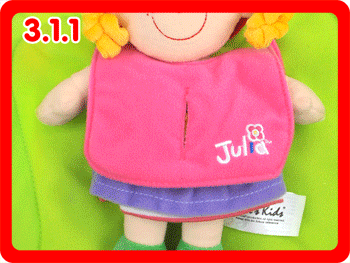











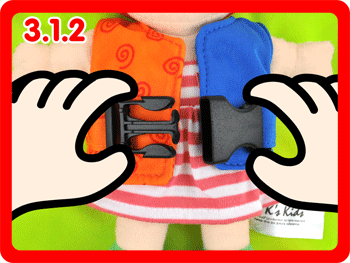











Objective: Learning to pack – folding the toy up into a handbag
Method: Teach your child to fold up the toy into a handbag so she can carry it around easily.








Objective: Cognitive training – learning names of objects in the bedroom
Method: Teach children the names of different objects in Julia’s bedroom: bed, capet, blocks, ball, mirror etc.








Objective: Pretend play – learning everyday activities
Method: Allow children to play freely with Julia. For example, children may pretend that Julia is playing with her teddy, looking in the mirror or playing with toys in her room.








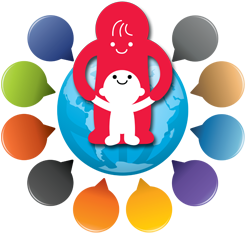
Sharing
We sincerely hope that the guidelines provided by our K's Kids Parents' Support Center will help you make the most of your K's Kids product. We hope that every child with a K's Kids product will benefit from playing and learning from it.
We also believe that every child is unique and full of creativity.
Apart from the learning methods provided here, have you or your child discovered fun and creative ways to play with your K's Kids toys? A different combination of Chain-an-inchworm? An interesting, new way to teach language using Learn to Talk™ ? Or do you simply want to share your feelings and opinions?
To share your views, please use the form below. Attach a photo or video and provide us with a short note. Whatever it is, we earnestly hope that you will share your views with us. Your views may in turn be shared with countless other parents, so that more kids can have fun with their K's Kids toys.
Please do not close this window.















































































